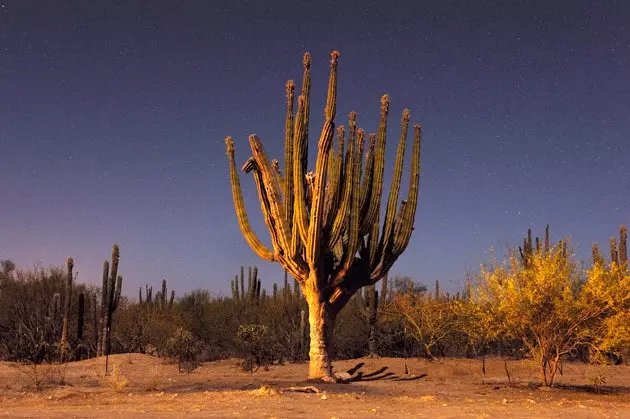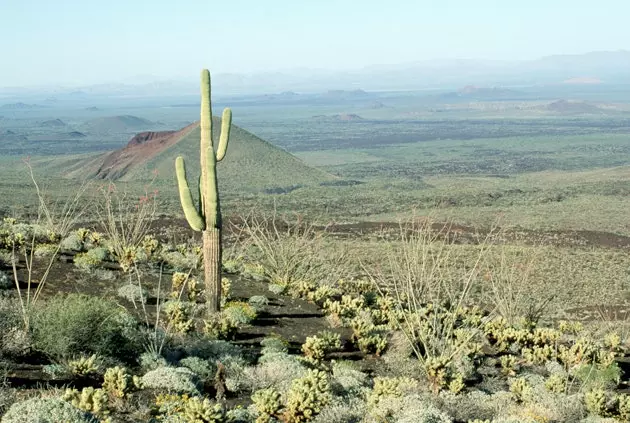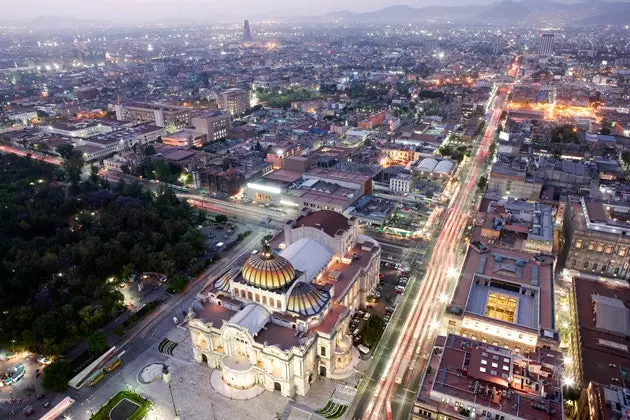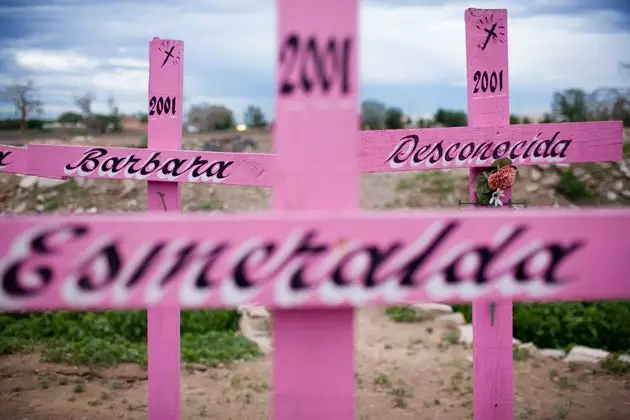
A cactus in the Mexican desert
This article is born in the middle of reading The Savage Detectives, with the preposterous hypothesis that perhaps the second part of this book (called with the same title) was nothing but a kind of make-up travel book . An endless list of places and times where his two characters: Arturo Belano (that indecipherable alter ego of Bolaño) and Ulises Lima wander for 20 eternal years. Both this part of the work and in the stories of Killer Putas, the spaces follow each other without glitter , capable of overshadowing and sublimating plots without resorting to clichés or natural hyperboles, only subjectivized memories that magnify or attenuate the impact of the environment.
But there is much more. There is impossible love for Mexico, limp nostalgia for Chile, references to Paris, life in Catalonia, etc. Absolutely partial spaces where the poets are amateurs and brave and are not afraid of staining themselves with ink, blood or semen. The detachment from many of these places in his narrations is symptomatic that Bolaño was not from anywhere , with which he starts with the advantage of not being accountable to anyone, only to his past. The one who best defines his relationship with the Planet is the author himself in the prologue of that work as personal and inexplicable as Antwerp: “I felt at an equidistant distance from all the countries in the world.”
SWEET MEXICO
This is the space par excellence where the most ambitious works of Roberto Bolaño are developed. A country where he lived for almost 10 years divided into two stages and to which he would never end up returning. As Dunia Gras and Leonie Meyer-Krentler argue in The Impossible Journey, in Mexico with Roberto Bolaño this rejection of return may be due to the fact that he never left there and that is why it is the spatial framework of the most important works. of the. He is a stark Mexico, violent but human , with defects, religions and other beliefs. He does not give up any of his many characters, neither the thief nor the policeman; neither the capricious landowner nor the maquiladora worker. His works, above all, speak of the desert, of the north of the country , far from paradises such as the Chiapas jungle or the Caribbean beaches. The moors of Sonora take on greater importance than its infinite coastline while the highway becomes the central axis. Always the journey, always the flight.
That is why his Mexico is synonymous with roadside bars and breakfast bars that are tributes to the egg and its endless possibilities for lunch. A good place to escape, as it happens in The Savage Detectives, where the reader is transported from one place to another, discovering authentic characters, unintelligible poems and stinking canteens where, however, he gets to be comfortable . One gets nostalgic about Sonora, as if each reader were the reincarnation of the poet García Madero.

The arid north of Mexico
MEXICO CITY: THE OTHER PARIS
The capital of 'your' country rises up as the culprit of everything, the one responsible for you, the reader, being before this article. There Roberto Bolaño studied, fell in love and, above all, embarked on the adventure of poetry, openly participating in all kinds of currents and leading the resurgence of Infrarealism together with his friend Mario Santiago Paspaquiaro (who would become Ulises Lima). . It is not the Mexico of squares with arcades or the luxury with woodworm of the post-Olympic years . It's the DF student, the one that takes place between Bucareli and UNAM, where young intellectual apprentices have no problem socializing, flirting with soft drugs and sleeping with prostitutes and waitresses. Where posture doesn't exist and good manners don't lead anywhere.
In the intense succession of streets in Bolaño's stories (he names them all, one by one) intellectual currents do not stop being born and die, as if it were Paris at the beginning of the 20th century, but without so much myth or so much paraphernalia. The reader ends up wanting to spend the afternoon in bars like the Encrucijada Veracruzana, drinking some synchro and ingesting tequila or mezcal tirelessly with the Font sisters from Los detectives Salvajes or with Auxilio Lacouture from Amuleto. He even imagines himself dictating invented poems without fear of not being up to the task because, simply, you have to be. And always under the threat of a latent violence that he does not oppress, but rather emboldens and debases.

Anatomy of Mexico City
THE TRUCULENT CITY OF JUAREZ
The Santa Teresa of 2666 does not exist in reality, but it is not difficult to guess that it is Ciudad Juárez. The border city is the territory of survival, the stark reflection of the constant threat of death and absence. Bolaño does not deny the obvious tragic side of him. In fact, he dedicates an entire part of this novel to the massacre that is committed day after day against his women. Everything happens in the shadow of the maquiladoras and with the complicit silence of the desert, which becomes a great tomb . Nobody here knows anything.
But it is also claimed as a city that should overcome the scourge, with boxing matches and night parties. With petty gringa tourists, journalists with too much nose and policemen with good intentions. Although it is not the ideal destination for a family trip, yes, it seems the ideal place to pilgrimage when everything in life runs out and only a city that lacks time to put its identity in order can become a lifesaver, an incentive.

Ciudad Juarez: gruesome violence
THE TWO FACES OF CHILE
Despite being born in Santiago de Chile, Bolaño treats his native country with an objectivity that becomes vehement. Because he has material for the opposite. Both in Distant Star and in Nocturno de Chile he speaks openly about the Pinochet coup, recounting in the first how his adolescence dissolves and how monsters are born, and in the second he manages to create a character who teaches Marxism classes to the dictator himself.
Chile is presented with two faces, with the descriptive one, that of the first bars of both novels, where there is life in cities like Santiago or Concepción, fertility in the fields and ingredients to create a new Chilean culture. Then he returns to a country rejected by the author, totally militarized and violent, a faithful reflection of that spirit that he felt when he understood that he could not do anything against the coup plotters and their way of creating a State (he was imprisoned ). These two faces leave the reader with a feeling aseptic, listless, hopeless . As if the country deserved a punishment for not knowing how to react but in which people survived who are worth returning to.
UNUSUAL PARADISE
When Roberto Bolaño focuses his novels away from the places where he has lived, from the indelible autobiographical marks on his works, what remains is a random succession of spaces of the most varied . Yes, there is enough of the Paris of immigrants, a bit of London, Turin, Vienna or Berlin, but they are always silent and almost anecdotal settings. However, the rest of the corners of the world gain vital importance in his stories.
As if he didn't want to get wet or didn't want to risk it, Bolaño makes the reader travel to unexpected and surprising places such as the caves of the coast of Roussillon, in France, the seabed of the North Sea, African cities such as Monrovia and Luanda , the dungeons of Beersheba in Israel or even an abandoned state farm in Kostekino, on the banks of the Dnieper in Ukraine. They are absolutely unusual spaces, strange , as if they had emerged from the stories of the bars of the bars of any port city. But extraordinarily described, with a crudeness that honors him as a writer, without falling into easy postcard descriptions. They are effective and wild, where Humanity is about to be and it is not worth much. Only those characters from an extensive anecdote shine, conveying a conclusion to the reader: places do not make men, they only sustain them. A conclusion that Bolaño exemplifies with his life.
SPAIN
Catalonia was the destination to which Roberto Bolaño arrived after leaving Mexico. Barcelona continues to yearn for him with a very extensive exhibition at the CCCB, although in his works he treats it as just another house where he lived and which appears circumstantially in the narration when he himself takes center stage. As if it were a sweet casual condemnation against which he did not rebel. Only in Antwerp, the road from Casteldefells to Barcelona acquires a notable role, although more like a kamikaze rehearsal prior to The Savage Detectives. Contrary to what happens with Mexico, it does not make its places of reading and fun as the Bar Céntrico, the studio where he lived on Calle Tallers, or the Parisienne farm a fundamental space in his works, as if he had burned all these resources with Mexican nostalgia.
same thing happens Girona or Blanes . The latter houses the end of Distant Star without pain or glory, as if he had chosen this place out of sheer laziness, unable to find a better place. But in Spain that surprise-space reappears, such as the asylum of Mondragon . In full development of the Amalfitano part in 2666, Bolaño pulls Lola's story and her passion for an eccentric poet interned in this psychiatric hospital out of his sleeve. Once again an unusual place, an inhospitable space that becomes an accomplice of the marvelous (and infrarealistic) anarchy with which Bolaño handles the reader at his whim.
There are also remnants of Madrid in 2666 or in Los detectives Salvajes, always presenting it with a certain superficiality, narrating the adventures through Malasaña of the critic Espinoza or the sunny days of the Book Fair.
